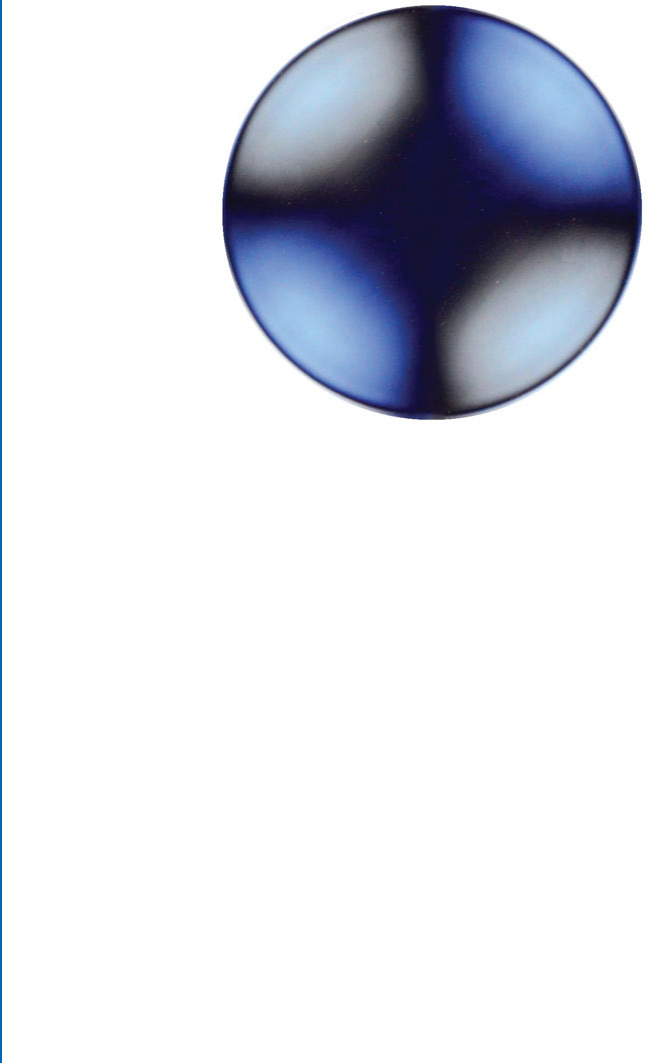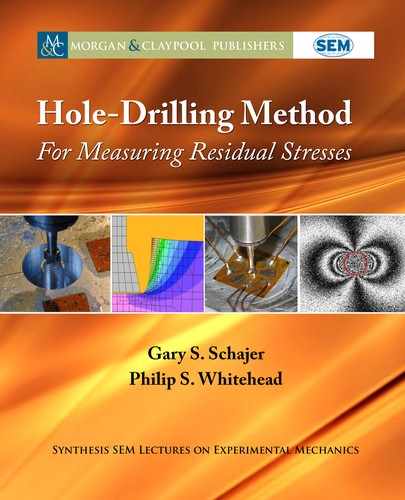
4 1. NATURE AND SOURCE OF RESIDUAL STRESSES
Figure 1.3: Lens stresses revealed by observation in plane polarized light.
of structural or processing non-uniformity, for example the grains within a metal or the phase
changes within a hardened surface. us, all practical materials have some level of residual stress.
1.3 SOURCES OF RESIDUAL STRESSES
Residual stresses can be created from many different sources, not just by the non-uniform so-
lidification mechanism described in Figure 1.2. Any process that causes misfits among different
parts of a material or structure will induce residual stresses. Most sources of residual stress can
be described in terms of the following four general categories.
1.3.1 BULK COMPONENT MISFIT IN REDUNDANT STRUCTURES
Redundant structures are structures that have more than the minimum number of supports or
members required to bear the applied loads. Most practical structures are redundant to some
extent, some quite substantially so. Such redundancy can often be desirable because it enables a
structure to continue to function even after one or more parts have failed.
A major characteristic of redundant structures is that misfit among the excess supports
and members can create internal stresses in addition to those from external loads. ese internal
“fit-up” stresses are residual stresses that exist within the structural members as a result of their
assembly into that structure. If the structure were disassembled, the associated residual stresses
in each member would disappear. In addition to the failure tolerance that structural redundancy
can provide, the associated residual stresses could also possibly enable the structure to function
..................Content has been hidden....................
You can't read the all page of ebook, please click here login for view all page.
